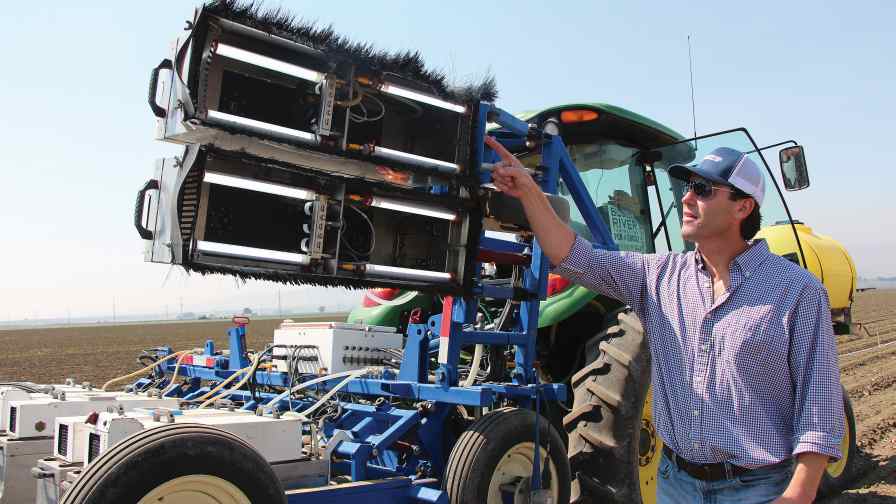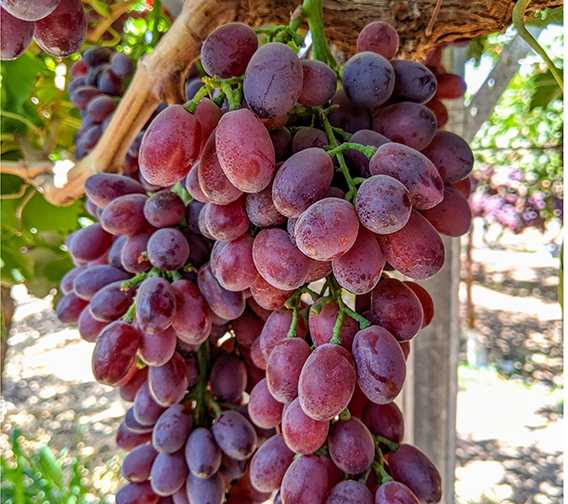Farming Equipment that Can Tell Plant from Weed? It’s Already Here (EDITORIAL)

Automated farming equipment has perhaps never been a hotter topic than right now. Adding fuel to the fire, farm equipment giant John Deere had a big splash at last week’s Consumer Electronics Show (CES) in Las Vegas, NV.
Last year was a tough act to follow. In 2019, it exhibited its machine learning (ML) and artificial intelligence (AI) enabled S-Series combine. This year, Deere brought out the big guns with its R4038 sprayer. It’s equipped with the nearing-close-to-commercialization Blue River See and Spray technology. Deere acquired Blue River via a $300 million friendly takeover back in 2017.
Cameras Plus AI Offer a Promising Future
Since 2017, many in ag waited patiently to get their hands on a piece of green and yellow Iron (or any color, really) that differentiates plant from weed in real time.
And that’s exactly how See & Spray works.
Its design is ingenious. It uses fixed, downward-facing cameras, which capture imagery of the ground and surrounding plants constantly. The camera has a forced mechanical shutter, coupled with edge-computing capabilities, and neural networks trained on what to recognize.
Powered by computer chip developer NVIDIA’s Jetson AI/ML chips, the new Deere rig can indeed differentiate agronomic plants from weeds or soil. It then applies crop protection chemicals over only the unwanted weeds, leaving the corn or soy or cotton plants untouched.
I first met Blue River’s excitable then-CEO and founder Jorge Heraud during the group’s R&D campaign in Texas cotton a couple months prior to the Deere buyout. At that time, the group was working on achieving 95% accuracy in distinguishing plant from weed. From what I’ve heard, the technology is now more accurate than the human eye. But more on that later…
Why is this important?
Well, for starters, the technology has mass appeal no matter what side of the aisle you currently sit on.
We know farmers are keen to save as much money as possible on crop protection chemicals. See & Spray varies inputs based on what areas of fields are experiencing heavy weed/pest/disease pressures. The technology could potentially decrease the volume of total pesticides farmers around the world apply to 2.5 billion pounds annually. That’s just over an 80% total reduction in herbicides applied, the folks at Blue River say.
And that’s considering only the agronomic crops.
What About Specialty Crops?
In specialty crop markets, growers are deploying the same machine vision technology concept at harvest. These machines can, again, differentiate what is a plant versus what isn’t, and it harvests only the viable plants.
Abundant Robotic’s automated strawberry harvester is a good example of the technology applied within the specialty ag world.
American Vegetable Grower recently got in contact with Murali Gopalakrishna, who heads up product management for intelligent machines at NVIDIA.
I got the sense in speaking with Gopalakrishna that, while many in farming see these technologies as something coming on the not-so-distant-horizon, that in actuality See & Spray is already being used by real farmers, in real farm fields, today.
“To be honest with you, it is commercial today and growers are using it,” Gopalakrishna tells me upon just returning from a week in the desert at CES. “When 10% of the lettuce being grown in the U.S. is with Blue River’s lettuce thinning [robot], and then there’s the strawberry harvester with Abundant [Robotics], this is not only happening here, but it’s happening worldwide.”
Gopalakrishna mentions an Israeli startup using machine learning and computer vision, with a robot/drone mashup. It can do both crop estimation and use automation to pick oranges.
“I honestly believe that, on the computer vision side of it, everything we are doing today is far better than what a human can do,” he says. “The efficiency of computer vision today is beyond what human beings are capable of achieving.”
Gopalakrishna shared a couple interesting developments during our short call.
First, manufacturers will do everything they can to ensure the robots are highly accurate coming off the assembly line. Yet growers will need to do some calibration and computer training work once the machines show up on the farm.
“For example, if the machine finds a weed it for some reason does not recognize,” he says, “the user will probably need to tell the company. And [he’ll] take some images of the weed so they can train the camera and computer to see it and recognize it.”
How Will Expensive Robots Go-To-Market?
Machine as a Service (MaaS) is how Gopalakrishna sees this type of technology being scaled throughout agriculture.
No one wants farmers to mortgage the farm on a large capital expense (or dip into cash reserves). Instead, regional-based service providers will own, operate, and maintain the expensive robots. They’ll charge farmers for the service, either on a per-acre or per-hours worked model.
“We see more and more customers looking at something like this through a machine-as-a-service model lens, or what we call robot-as-a-service (RaaS) model,” he says.
For Gopalakrishna and the team at NVIDIA, however, there is still unfinished business to tend to. Mostly in helping robotics companies get these types of automated machines to market at scale. And helping all farmers farm more efficiently.
“I think that the farmers in America and the rest of the world understand that this technology is here now,” he explains. “Many of them are starting to become more aware that there is a way to do their jobs in a more efficient way.”










